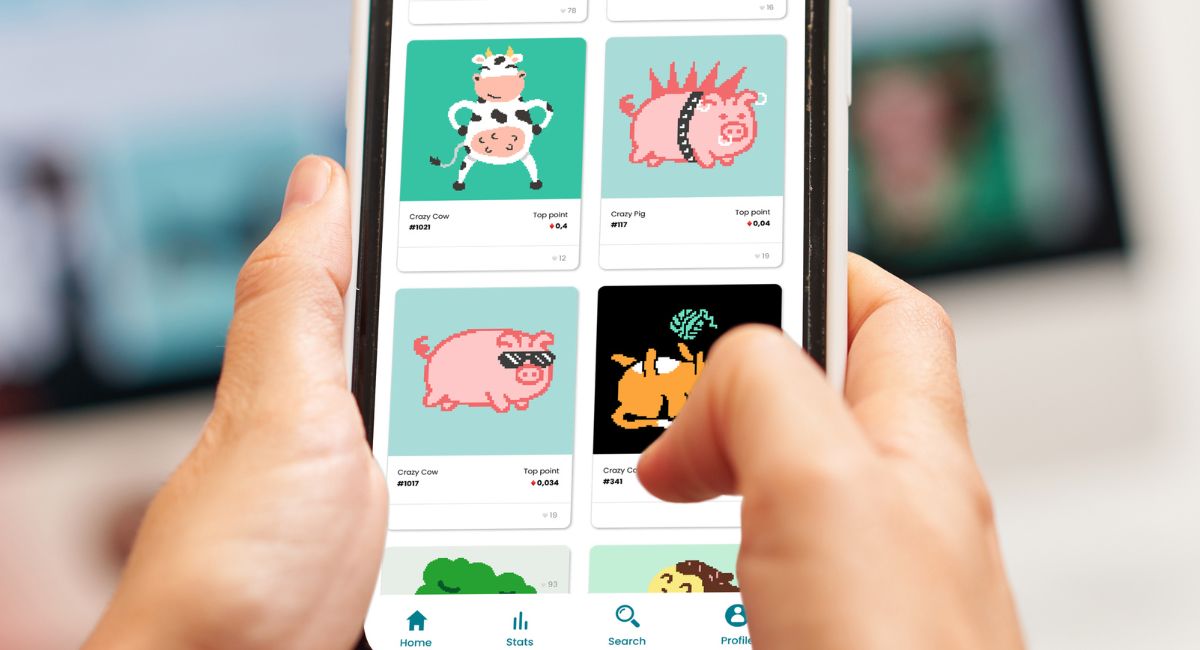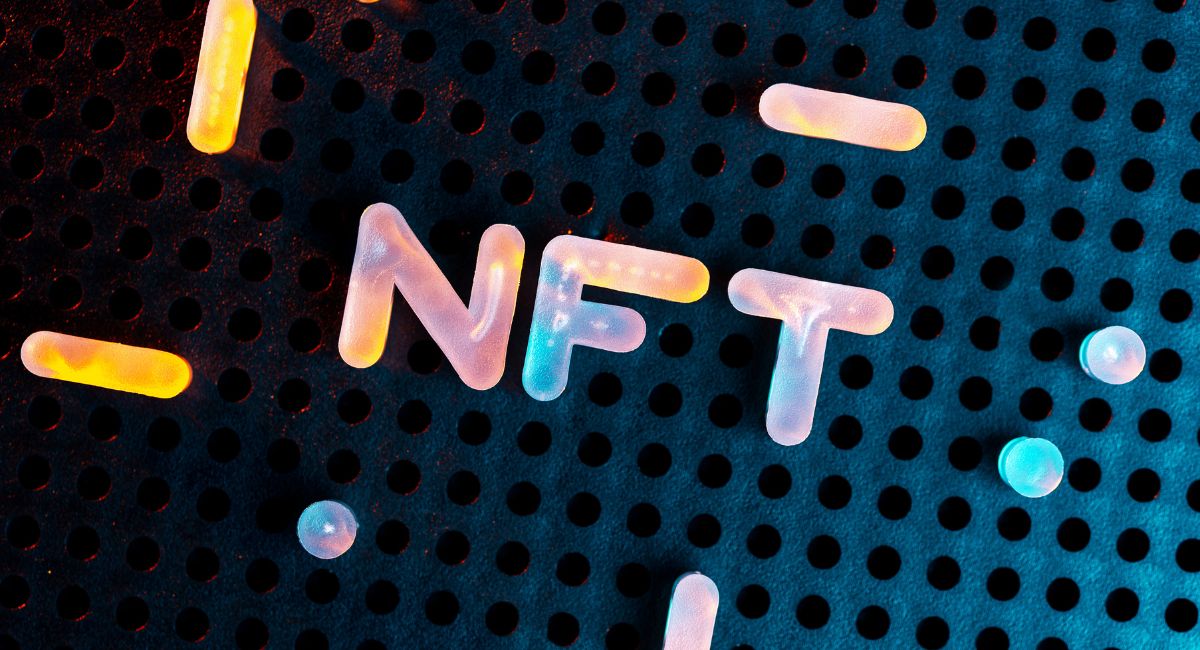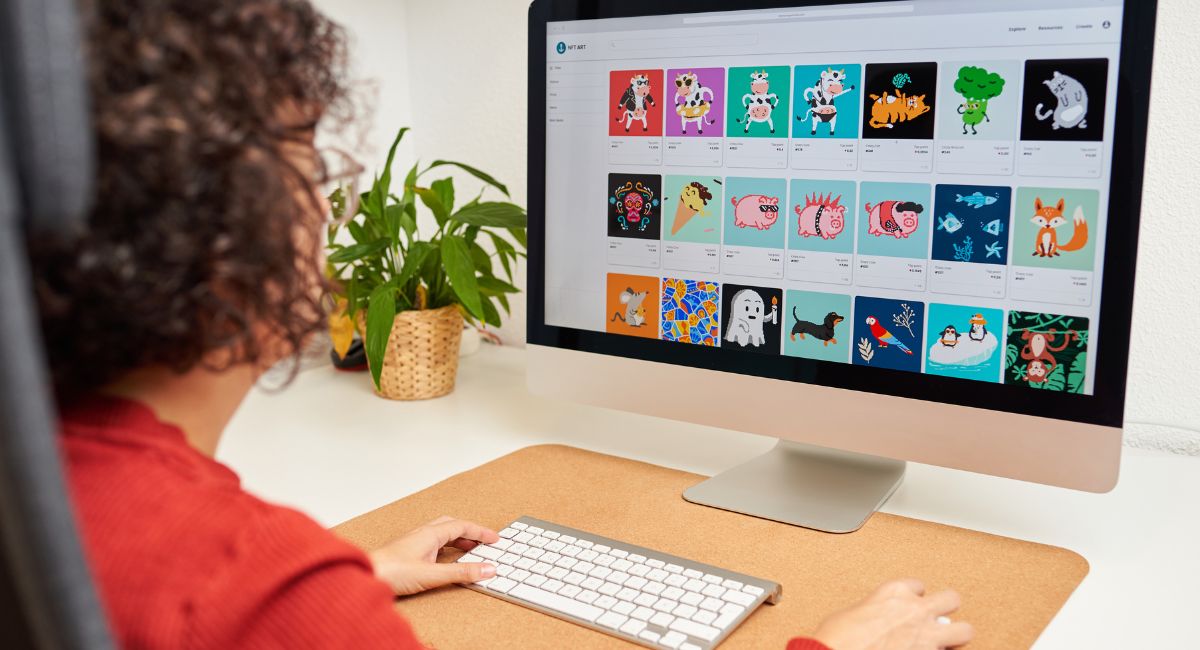Should NFT Artists Disclose Their Use of AI: Top 5 Intriguing Case Points In favor Of Transparency

The explosive world of Non-Fungible Tokens (NFTs) has become a breeding ground for artistic innovation. But with this innovation comes a growing debate: should NFT artists disclose their use of Artificial Intelligence (AI) in creating their artwork? On one hand, AI can be a powerful tool for artists, expanding creative boundaries and pushing artistic expression to new frontiers. On the other hand, some argue that a lack of transparency about AI usage undermines the perceived value and authenticity of the artwork. Let’s delve deeper into this multifaceted debate, exploring the arguments from both sides and the potential impact on NFT artists and the art world as a whole.
The Case for Transparency: Maintaining Authenticity in the Digital Age
In the burgeoning world of Non-Fungible Tokens (NFTs), where digital artwork fetches staggering sums, the question of authenticity takes center stage. Here’s why proponents of disclosure believe transparency regarding the use of Artificial Intelligence (AI) in creating art by NFT artists is crucial for maintaining a healthy and ethical ecosystem:
-
Preserving Artistic Integrity: At the heart of the argument lies the concept of artistic integrity. When artists fail to disclose their use of AI, it can be perceived as a form of deception. Collectors who value the human touch, the creative spark, and the artistic journey behind a piece might feel misled. They might be paying a premium for something they believe is solely the product of the artist’s vision and execution, when AI played a significant role in its creation. This lack of transparency undermines the very essence of artistic value that the NFT market is built upon.
-
Setting Clear Expectations: The NFT art space thrives on a clear understanding of what collectors are purchasing. Disclosure empowers collectors to make informed decisions based on their own preferences and values. Some collectors might be drawn to the innovative and cutting-edge use of AI in art, appreciating the unique blend of human and machine creativity. Others, however, might value a more traditional approach, where the artwork is solely the product of the artist’s vision and skill. Transparency allows collectors to choose artwork that aligns with their expectations, fostering a sense of trust and satisfaction within the NFT art market.
-
Combating Misrepresentation: The nascent stages of the NFT market are susceptible to bad actors who might exploit the lack of transparency. These actors could potentially misrepresent AI-generated art as solely their own creation, essentially selling collectors a false narrative. Disclosure acts as a safeguard against such misrepresentation, fostering a more ethical and trustworthy environment within the NFT artists community. By knowing about the role of AI, collectors can make informed decisions and avoid being misled by unscrupulous actors.
-
Highlighting the Artist’s Skill: The argument for disclosure goes beyond simply acknowledging the use of AI. It’s important to recognize that effectively utilizing AI as a creative tool is a skill in itself. Artists who master the art of working with AI, curating its outputs, and integrating them into a cohesive artistic vision deserve recognition for their expertise. Disclosure allows them to showcase this skill and potentially enhance their value proposition within the NFT art market. Collectors can then appreciate the artist’s ability to harness the power of AI and create something truly unique and valuable.
-
Building a Foundation for Future Innovation: Transparency regarding AI use can pave the way for responsible and innovative exploration of this technology within the NFT art space. By openly acknowledging the role of AI, artists can contribute to a constructive dialogue about the evolving nature of art creation in the digital age. This dialogue can help establish best practices for AI integration, ensuring that AI is used as a tool to augment human creativity rather than replace it. Furthermore, transparency fosters trust and encourages experimentation. When collectors understand the possibilities and limitations of AI in art, they become more open to new artistic expressions that leverage this technology in innovative ways. This can lead to a more vibrant and dynamic NFT art market that celebrates artistic exploration at the forefront of technology.
In essence, the case for transparency centers around safeguarding the authenticity and integrity of the NFT art market. By disclosing the use of AI, NFT artists can maintain the trust of collectors, set clear expectations, and ensure that the value placed on art reflects not just the final product but also the genuine creative process behind it.
Also, read – 8 NFT Artists Nurturing And Creating Their Own Vibrant Crypto Communities
The Counterpoint: Artistic Freedom and the Evolution of Art

The debate surrounding AI disclosure in NFT art isn’t one-sided. While transparency has its merits, those against mandatory disclosure raise compelling arguments that center around artistic freedom and the potential of AI as a tool for artistic evolution. Let’s delve deeper into this perspective:
-
Artistic Freedom and Experimentation: At the core of artistic expression lies the freedom to experiment and explore new creative avenues. Mandatory disclosure of AI use could be seen as a restriction on this freedom. Artists should be able to experiment with various tools and techniques, including AI, without feeling pressured to justify or dissect every step of their creative process. Just as traditional artists might utilize various mediums and tools (paints, brushes, chisels, etc.) without explicitly mentioning each one, AI can be viewed as an extension of the artist’s toolkit. Forcing disclosure could stifle this exploration and hinder the development of new artistic styles and techniques that leverage the potential of AI.
-
Focus on the Final Product: The crux of artistic value, according to this viewpoint, lies in the final product, the completed artwork itself. Regardless of the tools used to create it, the emotional impact, the artistic merit, and the overall message conveyed by the NFT artists through artwork are what truly matter. If the resulting piece resonates with collectors, evokes emotions, and sparks intellectual discourse, does it truly matter if AI played a role in its creation? This perspective emphasizes the importance of artistic outcome over the specific tools employed to achieve it.
-
Blurring the Lines of Creativity: The digital age is characterized by a blurring of lines between human and machine capabilities. AI is no longer a standalone tool but can be seen as a potential collaborator, pushing artistic boundaries and generating unexpected results that might not have been possible through human creativity alone. Should artists be forced to dissect and disclose the intricate dance between their own vision and the role of AI in the creative process? This perspective argues that such disclosure undermines the collaborative nature of AI-assisted art creation.
-
Stifling Innovation: Mandatory disclosure of AI use could have a chilling effect on artistic experimentation. Artists might be discouraged from exploring the potential of AI for fear of being ostracized by purists who value traditional artistic methods. This could hinder the development of new artistic styles that seamlessly blend human and machine creativity, ultimately limiting the artistic potential of the NFT artists space.
In essence, the counterpoint to mandatory disclosure emphasizes the importance of artistic freedom and the potential of AI as a tool to push the boundaries of artistic expression. By focusing on the final artwork and the collaborative nature of AI-assisted creation, this perspective argues for a more open and experimental approach to art via NFT artists, allowing artists to explore the full potential of this new creative landscape.
Finding Common Ground: A Path Forward in the AI and NFT Artists Debate

The ongoing debate surrounding AI disclosure in art by NFT artists highlights the complex and dynamic nature of artistic creation in the digital age. While proponents of transparency advocate for clear communication to uphold authenticity, those against mandatory disclosure raise concerns about stifling artistic freedom and hindering innovation. Finding a middle ground is crucial to ensure a healthy and vibrant NFT art space. Here are some potential ways to move forward:
-
A Spectrum of Transparency: Instead of a rigid “disclose everything” or “disclose nothing” approach, a spectrum of transparency could be encouraged. Artists could choose the level of detail they reveal about their use of AI in creating their NFT artwork. This might involve:
- Basic Disclosure: Simply acknowledging the use of AI tools at some point in the creative process.
- Detailed Explanation: Providing a more in-depth explanation of how AI was used, what role it played in the artwork’s creation, and how the artist interacted with the AI outputs.
- Focus on Artistic Intent: Shifting the focus from the specific tools used to the artist’s intent behind incorporating AI. This could involve explaining how AI helped achieve the desired artistic vision.
This spectrum allows artists to maintain some creative control over the disclosure process while still offering collectors valuable information to make informed decisions.
-
Education for Collectors: Empowering NFT collectors through education about AI’s potential role in art creation is vital. Understanding the possibilities and limitations of AI can help collectors appreciate the artistry involved, regardless of the tools used. Educational resources could include articles, workshops, and discussions that explore the artistic potential of AI and its impact on the NFT art market.
-
Focus on Artistic Process: NFT marketplaces and communities could encourage artists to showcase their creative process, regardless of whether AI is involved. This could involve artists sharing preliminary sketches, early iterations, and their interaction with AI tools (if used). Providing a glimpse into the artist’s journey fosters a deeper connection with collectors and allows them to appreciate the artistic effort behind the final NFT artwork.
-
Evolving Regulations: As the NFT art market matures, regulations surrounding ownership, authenticity, and disclosure might evolve. These regulations could potentially address the issue of AI usage in a way that balances artistic freedom with consumer protection. For example, regulations might require basic disclosure of AI use without dictating the specific details artists need to reveal.
The Future of NFT Art: Embracing a New Artistic Landscape with AI

The world of NFT art is a canvas brimming with innovation, and the recent debate surrounding AI disclosure by NFT artists is just one stroke in this ongoing artistic evolution. As Artificial Intelligence (AI) continues to develop at an exponential rate, its influence on artistic creation is undeniable. This begs the question: what does the future hold for NFT art in this new artistic landscape shaped by AI?
Beyond Disclosure: A Spectrum of Artistic Expression
The debate around AI disclosure has sparked a crucial conversation about transparency and authenticity in the NFT art market. However, the future might not lie in a binary choice of “disclose everything” or “disclose nothing.” Instead, a spectrum of artistic expression could emerge, where NFT artists have the freedom to choose the level of detail they reveal about their creative process, including AI usage.
-
The Rise of Hybrid Art: Imagine a new category of “hybrid art” taking center stage. Here, NFT artists openly acknowledge and celebrate the use of AI as a collaborator, pushing the boundaries of traditional artistic methods. This could lead to a fusion of styles, with AI-generated elements seamlessly integrated into the artist’s vision, creating unique and thought-provoking NFT artwork.
-
The Artist as Curator: With AI tools becoming more sophisticated, the role of the NFT artist might evolve into that of a skilled curator. Artists could utilize AI to generate a vast array of creative possibilities, then meticulously select and refine the outputs that best align with their artistic vision. This curation process becomes an art form in itself, requiring a deep understanding of AI capabilities and a keen artistic eye.
-
Documentation as Storytelling: The future of NFT art might place a greater emphasis on documentation. Artists who integrate AI into their workflow could maintain detailed records of their creative journey. This documentation could include the artist’s prompts to the AI tool, the iterations explored, and the final artistic decisions made. This not only fosters transparency but also serves as a valuable narrative for collectors, offering a glimpse into the artistic process and the unique collaboration between artist and AI.
A New Era of Artistic Exploration
The future of NFT art with AI is not about replacing artistic vision with machine-generated outputs. Instead, it’s about embracing AI as a powerful tool that can expand artistic possibilities and fuel creative exploration. Here are some exciting possibilities to consider:
-
Unforeseen Artistic Territory: AI can act as a springboard for artists to venture into uncharted creative territories. By prompting AI with unconventional ideas or feeding it vast datasets of unusual source material, artists can generate unexpected results that might not have been achievable through traditional means. This can lead to the birth of entirely new artistic styles and movements within the NFT art space.
-
Democratization of Art Creation: The accessibility of AI art tools has the potential to democratize art creation. NFT artists who might not have possessed traditional artistic skills can now leverage AI to express their creative vision, potentially leading to a more inclusive and diverse NFT art market.
-
Evolving Art Forms: The integration of AI could lead to the birth of entirely new art forms specifically tailored to the digital realm. Imagine interactive NFT art pieces that respond to collector input or generate unique outputs based on environmental data. The possibilities are endless, pushing the boundaries of what art can be in the digital age.
Challenges and Considerations
Of course, this artistic exploration with AI is not without its challenges. Here are some aspects to consider for a thriving NFT art future:
-
Ethical Considerations: As AI art creation continues to evolve, discussions surrounding ownership, copyright, and artistic attribution will become increasingly important. Clear guidelines need to be established to ensure that both artists and AI developers are fairly compensated for their contributions.
-
Standardization and Regulation: As the NFT art market matures, some level of standardization and regulation regarding AI disclosure might be necessary. This could help to maintain transparency and protect collectors from potential misrepresentation, while still allowing artists creative freedom.
-
Evolving Role of the Artist: The role of the NFT artist in a world increasingly influenced by AI will need to be redefined. The focus might shift from technical artistic skills to a deeper understanding of AI tools, a keen eye for curation, and the ability to translate artistic vision into effective AI prompts.
Collaboration for a Thriving Future
The future of NFT art with AI is a collaborative one. By fostering open communication between artists, collectors, AI developers, and NFT art platforms, a thriving ecosystem can be created. This collaborative spirit will ensure that AI is used ethically and responsibly, while empowering NFT artists to push the boundaries of artistic expression and create groundbreaking works that redefine the very essence of art in the digital age.
Ultimately, the future of NFT art with AI is bright and brimming with possibilities. As we move forward, let



























































